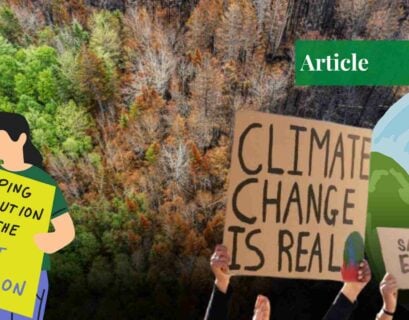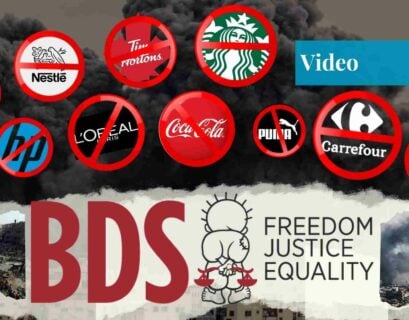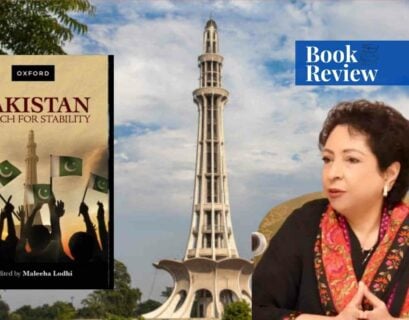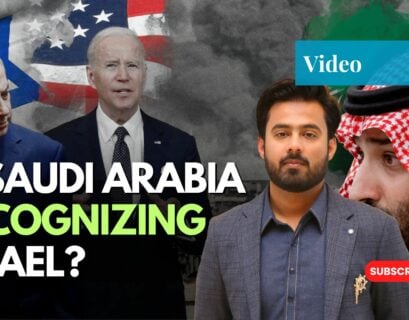Ms Hina Anwar is a journalist with a long line of experience in research and media.
The Current State of Pakistan’s Economy
Pakistan’s economy has been plagued by structural inflation, with the Consumer Price Index (CPI) averaging around 25% while reaching 27.26% in August 2022, the highest level in 49 years. The average Sensitive Price Index (SPI) for the first five months of FY 2022 is close to 28%. The troubling element is that the SPI has been in double digits since July 2018. This means that the cost of basic necessities has nearly doubled in the last four years.
The rupee’s depreciation has also been a major factor in Pakistan’s rising prices. From 2013 to 2017, the dollar-rupee parity was maintained at roughly Rs.105/$, and price growth was gradual. When the rupee and dollar are artificially tied together, this price mechanism does not allow it to float freely which increases the trade deficit by making imports more affordable and exports more expensive.
The parity between the rupee and the dollar was about 125 to 1 in 2018 but reached 240 to 1 in September 2022, a level that proved to be historically unparalleled in Pakistan. Despite this price adjustment, imports exceeded exports by a wide margin, and the trade deficit increased. With an annual growth rate of about 15%, the dollar’s strength doubled in just five years.
Due to a liquidity crisis, the situation got so bad that the Pakistani central bank stopped issuing Letters of Credit (LCs) for imports. Defense equipment imports have also been constrained. Despite record-high remittances from overseas, increasing energy costs drove Pakistan’s current account deficit to fall to $0.4 billion.
Pakistan has $130 billion in foreign debt, with $73 billion coming due in three years. Even the bond and currency markets, which had previously displayed greater confidence in Pakistan following the IMF agreement, are now pricing Pakistan high due to worries that the nation may stop making payments on its foreign debt.
Moody’s has cut Pakistan’s credit rating. S&P Global, a global rating agency, also lowered Pakistan’s long-term sovereign credit rating from “B” to “CCC+” to reflect the country’s persistently declining external, fiscal, and economic parameters.
A Dangerous Combination
Global financial conditions are tightening due to higher-than-expected inflation, particularly in the US and the main European economies. The latest interest rate increases in the US would reduce future revenue for developing countries outside of China by an estimated $360 billion.
Net capital flows to developing countries have also turned negative. This year, the currencies of almost 90 developing nations have experienced significant devaluations relative to the dollar. Since Pakistan is currently experiencing one of its most difficult balance-of-payments crises, the effects are likely to be severe.
Why Is Pakistan’s Economy in ICU for the Long Haul?
The economic crisis in Pakistan has been brewing for a long time. We can look back quite far in the history of the country to discover that every government often leaves an even worse condition for the next government to cope with.
In the 1980s, money from the Afghan War, and in the 2000s, money from the War on Terror, provided the country with a temporary reprieve. These crutches were regrettably used by the elite of the nation to continue living life as usual and avoid making the significant changes that the nation’s economic structure demanded.
Inconsistent economic policies, the pursuit of wrong priorities, and poor governance are to blame for the economy’s ongoing woes. Consecutive governments have changed fiscal priorities, leading to unstable economic conditions. The fact that landlords and industrialists make up the majority of the parliament has also prevented the nation from collecting taxes on lands or agriculture.
Moreover, Pakistan’s boom-bust growth cycle is a persistent issue that leads to an unsolved balance of payments crisis. Among these factors that led Pakistan to the current dire economic crisis, the two main causes were a rapidly rising subsidy bill for spiraling energy costs in 2008 and extremely low tax revenues, which combined to cause an increasingly large fiscal deficit.
Threats from growing militancy and ongoing political instability since October 2021 worsen the already bleak economic outlook. Due to the severe floods, the detrimental effects of the aforementioned problems in Pakistan were made even worse. 33 million people were affected by the floods of 2022, and the GDP loss as a direct result of the floods is expected to be about 2.2 percent of FY22’s GDP.
The Economy’s Downward Spiral and “Daronomics”
Mr. Ishaq Dar, a trusted adviser of Shahbaz Sharif’s older brother, former PM Nawaz Sharif, returned to Pakistan after a five-year exile and was reappointed as the country’s finance minister. The seasoned chartered accountant has served in this capacity three times and has adhered to a traditional economic philosophy, which frequently takes the form of quick fixes to impose fiscal restraint and prudence.
Mr. Dar’s obsession with manipulating the rupee’s value concerning the dollar is keeping the Pakistani economy captive. Manufacturing facilities are closing their doors, and arbitrary quotas prevent importers from having their Letters of Credit opened. The rupee is not depreciating, thus all is well.
Pakistan’s inflation is soaring and its supply of raw materials for the pharmaceutical and export industries is rapidly running out. IMF is refusing to cooperate, and no foreign allies are sending funds in droves. One can question what the overall strategy here is. It is nothing new for Mr. Dar to manipulate the rupee’s value with the dollar. A $20 billion current account deficit was the outcome in 2018.
Due to the manipulated value of the rupee, importing goods was less expensive than having them made in Pakistan or exported. As a result, Pakistan’s industry shrank, exports decreased under the PML-N, and imports it couldn’t pay flourished, pushing the country to bankruptcy before PTI gained power. The general public is about to watch this terrible film again.
Not only did Mr. Dar destroy Pakistan’s exports and blow up an unmanageable current account deficit but he also wasted low oil prices to ignite a spending boom rather than make investments in economic structural transformation. Mr. Dar is doing it once more but in a far less accepting environment outside. Despite the impending global recession and the devastation floods have already caused in Pakistan, Mr. Dar has not altered his approach.
However, the spectacular failure of Mr. Dar explains that he’s not been brought to manage Pakistan’s economy as much as he’s been brought to manage PML-N’s politics. The fundamental notion is that Dar can somehow influence the rupee to appreciate and aid PML-N in winning the upcoming elections, which will take place sometime in April 2023. This is where the leadership of the PML-N’s ignorance is most startling. The strength of a currency is an indicator of how well an economy is run, but Mr. Dar seems to think it’s also a factor in how well an economy can be run.
An economy that is closing industries, laying off workers, and experiencing astronomical inflation cannot be supported at the expense of the rupee. This is not good economic management. The fact that this man is the country’s current finance minister says everything about the competence of this government. Mr. Dar has been openly opposing the IMF and ignoring the poor economic circumstances throughout Pakistan, prolonging a bigger crisis that doesn’t appear to be getting better any time soon.
Is Pakistan Going to Default?
In terms of its commitments regarding external debt, Pakistan has never defaulted. On December bond maturities, the government paid $1 billion, and now with only a little amount of gross foreign exchange reserves left, Pakistan is preparing to settle debts totaling over $1 billion to two foreign commercial banks early next month. This is happening despite the government’s valiant efforts to prevent a sovereign default. The financial planners have been shaken up by this failure and feel hopelessly entrapped by the issues that result.
The fiscal year 2022–2023 will see interest payments totaling about $600 million, although it won’t be fully redeemed until April 2024. In plain accounting terms, the nation is not prepared to accept the impending issues, and the books are not balanced. They adhere to the ideas that “a country cannot default” when the IMF is there, “nuclear power cannot default,” and “this is not the first time.”
An analysis of Pakistan’s imports is incredibly instructive. Its imports from 1960 to 1973 totaled less than $1 billion. Over 20 years, from 2002 to 2022, Pakistan’s import bill has increased by about 600%. Regardless of what anyone imagines, assumes, or projects, the nation became bankrupt and insolvent in 2018. Only with IMF assistance and the rollover of foreign debts was the sovereign default avoided.
Without comprehending that the issue was with the vehicle, not the driver, a new government was installed at that time to experiment with a new design. New engines for export and import replacement were required for a thorough overhaul of the vehicle.
What Choices Does Pakistan Have?
To manage its protracted economic crisis, Pakistan is faced with an illusion of false options. It can either immediately return to the IMF, or it can refuse to uphold its commitments as a sovereign. Unfortunately, there isn’t a third choice. However, time is of the essence. Returning to the IMF and taking whatever stringent steps are required is the logical course of action. Authorities, however, are inexplicably leaning toward the incorrect decision for several reasons.
The delay in the start of the ninth review negotiations with the IMF accounts for the delay in the payment of pledged assistance by friendly nations, particularly China and Saudi Arabia, and pledges made directly to the IMF.
To put it in a nutshell, the lack of flexibility in the foreign currency policy is the fundamental cause of much of what ails the economy today, and it is high time that the economic ministers accept this critical blunder and alter this policy quickly.
A Way Forward
All is not well on the economic front, but inflows from the IMF and friendly nations are anticipated to stabilize Pakistan’s economy soon. The government has not implemented any substantial economic reform initiatives therefore the medium and long-term prognosis is unchanged. But the question arises: Are there any signs that Pakistan will undertake the necessary structural reforms so that it won’t require future injections of outside assistance? No, that’s the clear answer.
Elections will soon be held under this coalition government. Khan is also showing no sign of giving up, which means the government has very little political capital to invest in actions that will cost money in the short term but would address the nation’s problems in the long run. The political and non-political elite in Pakistan also profit from the current kleptocracy, so why would those elites ever take steps to fundamentally alter the economic system when doing so would mean losing their influence, wealth, and power?
If you want to submit your articles and/or research papers, please check the Submissions page.
The views and opinions expressed in this article/paper are the author’s own and do not necessarily reflect the editorial position of Paradigm Shift.



















